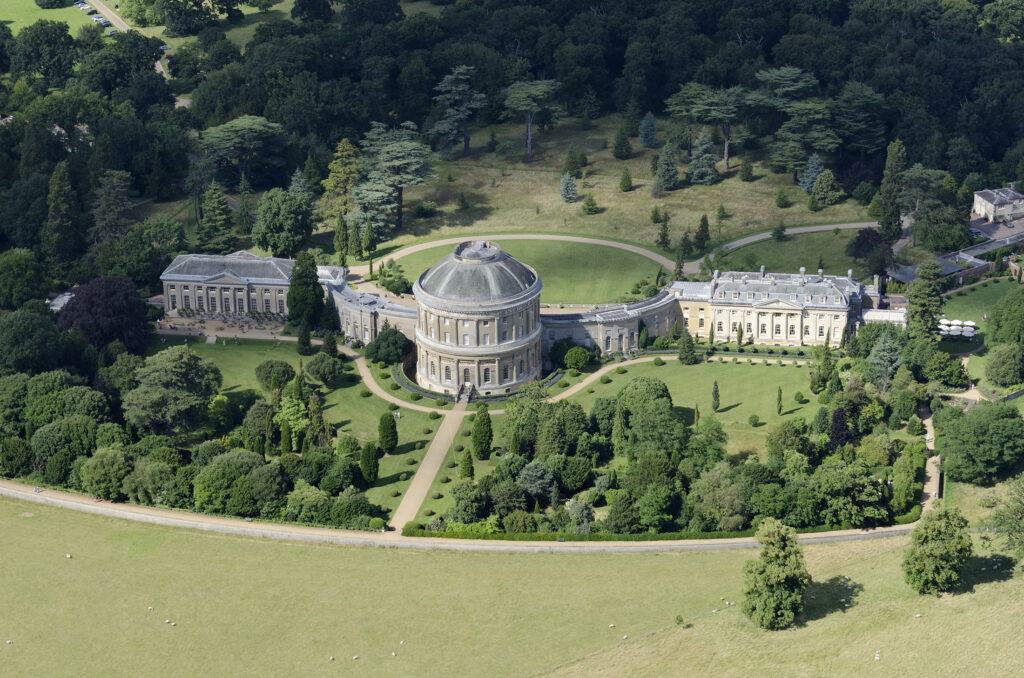On Wednesday 24th July, eleven Bury St Edmunds group members visited Ickworth House, a National Trust stately home near Bury St Edmunds, for a conservation tour. After coffee in the restaurant we were greeted by the tour guide Alan and conservation assistant Natalie, to learn about how the NT looks after historic spaces and objects behind the scenes when the visitors have been and gone. Firstly we were told about the Earl Bishop who commenced building Ickworth in 1803, but did not live to see it finished. He was vastly wealthy and collected Art on his travels in Europe which was intended for Ickworth, but was confiscated by French troops and, apart from a few items, never arrived in England. His son the 1st Marquis was tasked with finishing the build and went to Europe to buy more Art for the collection and he and his family eventually moved into the East Wing in 1829. In the Entrance Hall we were told the huge ‘The Fury of Athamus’ statue was initially confiscated by French troops, but eventually turned up in Paris and was purchased by the 1st Marquis so it was actually paid for twice!
In the Pompeian Room conservation assistant Natalie talked about how the 8,000 books in the house are cleaned with special brushes. A ‘museum grade hoover’ is used for some items. Light monitors and bug traps are positioned around the rooms. Excessive light is damaging to paintings and textiles, and bugs such as silver fish can also be a problem. Bats have been known to appear in some rooms, and are carefully removed to a safe place. Each room has a ‘light budget’ which is monitored and the light reduced at the windows with blinds if necessary. Moving on to the Dining Room and then the Library we learned that the chandeliers are cleaned in situ, dismantled, washed and reassembled, this is done every few years at a cost of thousands of pounds. The heavy silk curtains are protected with fine mesh.
A very interesting visit and a fascinating insight into the meticulous conservation work and attention to detail that goes on behind the scenes.
by Val Seaman



